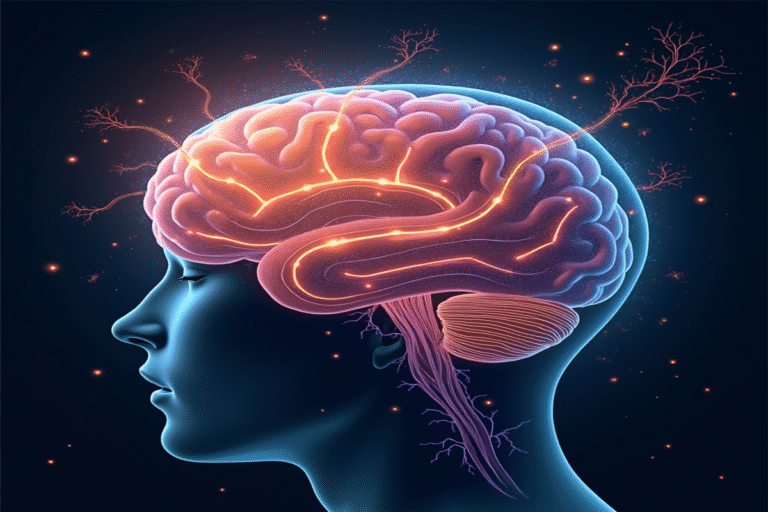Have you ever wondered what’s happening inside your head when you’re struggling to master a new piano piece or perfect your tennis serve? The process is far more fascinating than simply practicing until you get it right. What’s really occurring is an intricate biological transformation that rewires your brain.
Your Brain on Practice: A Neural Makeover
When you first attempt a new skill—whether it’s driving a car, speaking French, or solving a Rubik’s cube—your brain works incredibly hard. Neuroimaging studies show that beginners activate large portions of their prefrontal cortex, the area responsible for conscious thought and problem-solving. This is why learning something new feels mentally exhausting; your brain is operating at high capacity, burning through glucose and oxygen as it searches for patterns.
But something remarkable happens with repetition. Your brain begins to restructure itself. Neurons that fire together during practice literally wire together through a process called neuroplasticity—your brain’s ability to reorganize by forming new neural connections.
From Conscious to Automatic: The Efficiency Revolution
After enough practice, activity shifts from the prefrontal cortex to areas like the basal ganglia and cerebellum—regions responsible for automatic movements and routines. This shift explains why experienced drivers can navigate while holding a conversation, while new drivers grip the wheel tightly, unable to focus on anything else.
One study from the University of California found that as participants mastered a sequence-learning task, their brain activity initially increased but then significantly decreased as the skill became automatic. The brain had built a neural shortcut—increasing efficiency while reducing effort.
Myelin: Your Brain’s Natural Performance Enhancer
Perhaps the most fascinating aspect of skill learning involves a fatty substance called myelin. When you repeatedly practice a skill, glial cells in your brain wrap layers of myelin around the neural circuits involved in that activity. This myelin sheath acts like insulation around an electrical wire, allowing signals to travel up to 100 times faster while using less energy.
“Cells that fire together, wire together. Cells that fire together, quickly, wire together strongly,” explains neuroscientist Dr. Douglas Fields, whose research has revolutionized our understanding of myelin’s role in learning.
This explains why consistent practice over time—rather than occasional cramming—leads to true mastery. Myelin builds up incrementally with each practice session, gradually transforming awkward attempts into fluid expertise.
The Spacing Effect: Why Distributed Practice Wins
Cognitive science has consistently shown that spacing out practice—studying material multiple times with breaks in between—leads to much better retention than cramming. This phenomenon, known as the spacing effect, works because each time you recall information or perform a skill, your brain must rebuild the neural pathway, making it stronger with each attempt.
Researchers at Johns Hopkins University found that participants who practiced a motor skill with breaks between sessions showed nearly twice the performance improvement compared to those who practiced continuously for the same total time.
Sleep: Your Brain’s Hidden Learning Superpower
Much of your skill improvement happens while you are not practicing at all—but sleeping. During deep sleep, your brain replays the neural patterns activated during practice, strengthening connections and integrating new learning with existing knowledge. This process, called consolidation, explains why you sometimes wake up able to perform better than when you went to bed.
A groundbreaking study in Nature Neuroscience found that participants learning a sequence of button presses improved their performance by an average of 20% after a night’s sleep, without any additional practice.
Deliberate Practice: Quality Over Quantity
Not all practice is created equal. Research by psychologist Anders Ericsson revealed that elite performers engage in what he called “deliberate practice”—focused sessions that push just beyond current abilities, incorporate immediate feedback, and target specific weaknesses.
This type of practice triggers optimal myelin production and neural adaptation, making it far more effective than mindless repetition. It’s not just about putting in hours; it’s about making those hours count by maintaining focused attention on improving precise aspects of performance.
Mistakes: The Unexpected Learning Accelerator
Surprisingly, making errors during practice significantly enhances learning. When you make a mistake, your brain experiences a surge of electrical activity as it notices the difference between expected and actual outcomes. This “prediction error” signal strengthens learning by highlighting exactly what needs to change.
This explains why challenging practice that includes struggle and error is more beneficial than easy, error-free practice—a finding that has profound implications for education and training.
The Bottom Line: Your Brain as a Skill-Building Machine
The science is clear: your brain is an incredibly sophisticated learning machine, constantly reshaping itself based on what you repeatedly do. Through the wonders of neuroplasticity, myelin production, and sleep consolidation, consistent practice transforms neural circuits from slow and effortful to fast and automatic.
So the next time you’re practicing piano scales, rehearsing a presentation, or trying to perfect your golf swing, remember that you’re not just going through the motions—you are actually sculpting your brain into a more efficient, high-performance version of itself. Like a biological 3D printer, each repetition lays down another layer of neural structure, gradually building the architecture of expertise.
The key insight is this: mastery isn’t about how quickly you can learn something—it’s about how deeply your brain changes in response to consistent, focused practice over time. Your practiced skills aren’t just things you can do; they become part of who you are, physically embedded in the structure of your brain.





